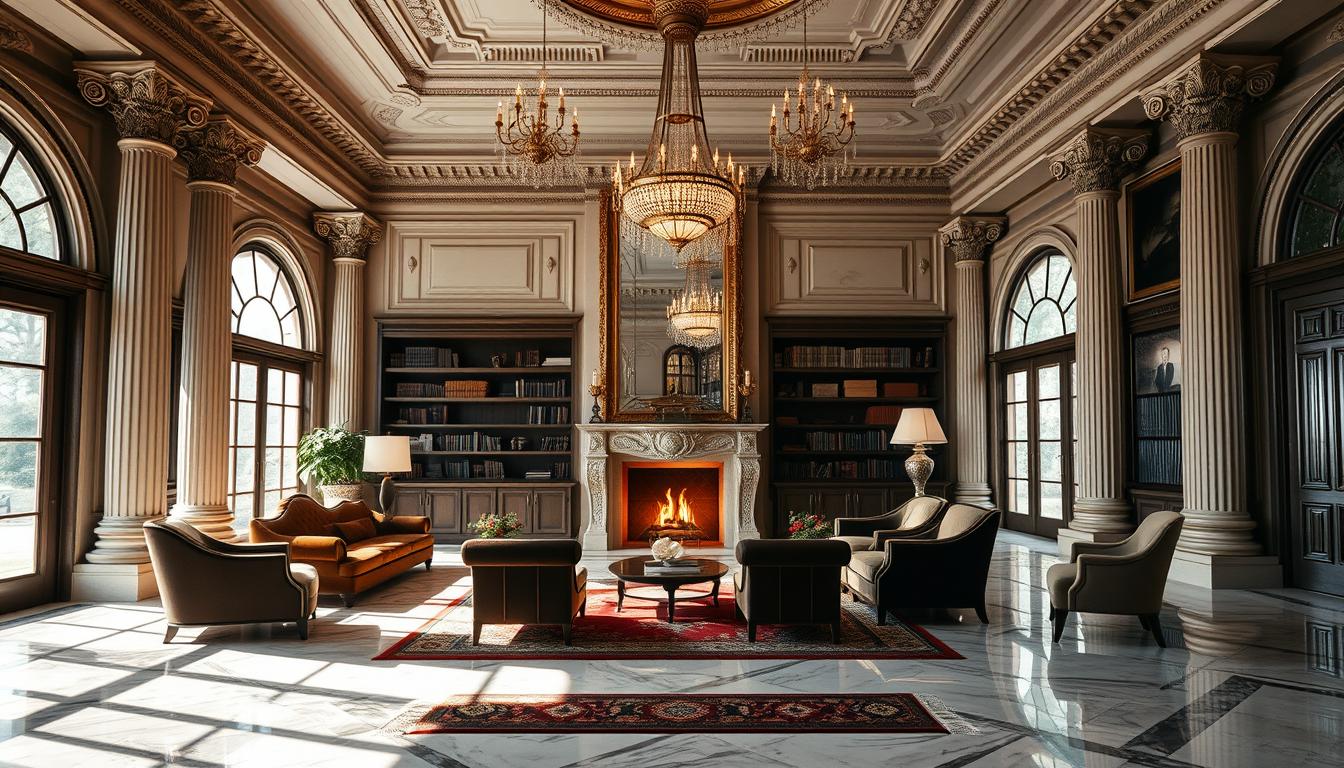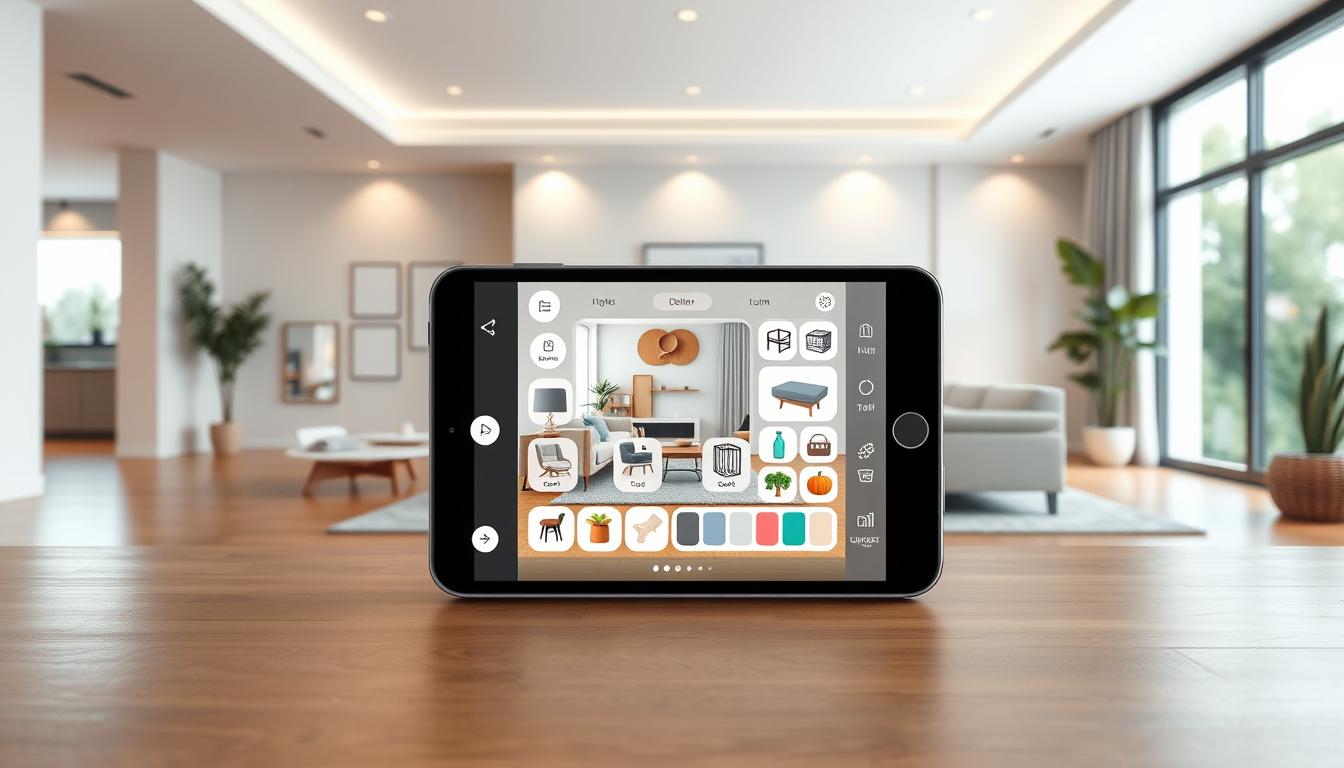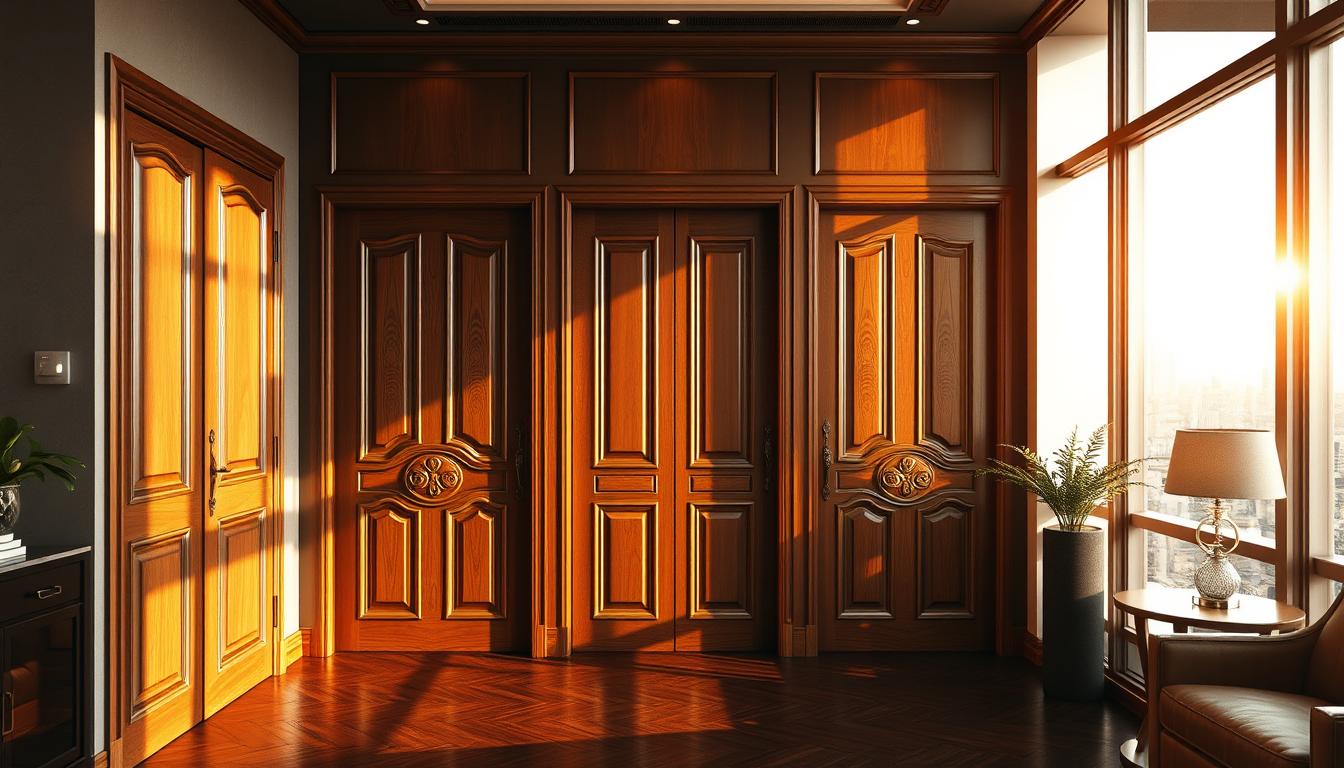Did you know millions of historic homes in the U.S. need restoration? It’s a challenge to keep their charm while adding modern comforts. We’ll dive into timeless interior design and what makes these homes special.
We’ll show you how to restore and keep your historic home. By mixing old charm with new comforts, you can make a unique space.
Key Takeaways
- Understanding the importance of preserving historic homes
- Key elements of timeless interior design
- Tips for balancing preservation with modernization
- Common challenges in restoring historic properties
- Best practices for maintaining your historic home
Understanding Historic Home Interior Design
It’s key to grasp the essence of historic home interior design to keep its heritage alive. Historic homes are more than structures; they hold history, architecture, and culture within them.
Defining What Constitutes Historic Homes
Historic homes stand out due to their architectural style and historical importance. They often have unique features like detailed moldings, hardwood floors, and fancy fixtures. These elements showcase the skill of their era.
To qualify as historic, a home must be at least 50 years old and hold significant architectural or historical value. The National Register of Historic Places plays a vital role in identifying and safeguarding these homes across the U.S.
“The preservation of historic homes is not just about maintaining old buildings; it’s about keeping the stories and histories they embody alive for future generations.”
The Importance of Preservation
Preserving historic homes is vital for our cultural and architectural heritage. It’s not just about keeping the buildings standing. It’s also about honoring their historical context.
| Preservation Aspect | Importance | Actions |
|---|---|---|
| Architectural Integrity | Maintains the original character | Restoration of original features |
| Historical Significance | Preserves the story of the past | Documentation and education |
| Cultural Heritage | Contributes to community identity | Community engagement and preservation efforts |
By understanding and preserving historic homes, we honor the past and enrich our present and future. This effort requires commitment, knowledge, and a love for heritage home decor and preservation-focused interior design.
Key Styles of Historic Home Design
Historic homes showcase a wide range of architectural styles, each with its own charm and history. Knowing these styles is key for homeowners who want to keep their homes true to their past.
Colonial
The Colonial style is a classic in American architecture. It’s known for its balanced look, straight lines, and classic architectural features like pilasters and pediments. These homes have a central door, evenly spaced windows, and a simple look.
Victorian
Victorian homes are the opposite, with their detailed and varied design. They have intricate woodwork, colorful masonry, and bold colors. Features like turrets, bay windows, and big porches are common.
Craftsman
The Craftsman style, from the early 20th century, focuses on handmade details and a cozy feel. It has low roofs, wide eaves, and decorative trusses. You’ll see exposed rafters and heavy columns, making homes feel warm and inviting.
Mid-Century Modern
Mid-Century Modern homes, from the 1930s to the 1960s, are all about simplicity and nature. They have big windows, open spaces, and a focus on horizontal lines. These homes often have classic architectural features like built-in shelves and simple decor.
To better understand each style, let’s look at a comparison table:
| Style | Key Features | Decorative Elements |
|---|---|---|
| Colonial | Symmetrical facade, rectangular shape | Pilasters, pediments, classic moldings |
| Victorian | Ornate details, patterned masonry | Turrets, bay windows, intricate woodwork |
| Craftsman | Low-pitched gabled roofs, wide eaves | Exposed rafters, decorative trusses, natural materials |
| Mid-Century Modern | Clean lines, large windows, open floor plans | Built-in cabinetry, minimalist decor, organic shapes |
Understanding each style’s key features helps homeowners make smart choices for restoration and decoration. This way, their historic home can keep its unique charm and character.
Essential Elements of Historic Interiors
Creating a true historic interior means picking the right architectural features, colors, and furniture. We’ll look at these key elements to help homeowners and designers create a space that’s true to its era.
Architectural Features
Architectural features are key to historic interiors, showing the home’s history. Moldings, trim, and doors are important to keep or restore. For example, original moldings can be refinished to keep their details, and doors can be brought back to their original look.
It’s important to know the design elements of the home’s era. A Victorian home might have fancy moldings and patterned plaster. A Craftsman home might have exposed beams and decorative trusses.
Color Palettes
The color palette is crucial in historic interior design. Historic color schemes used the pigments and dyes of the time. For example, Victorian homes had bold colors, while Colonial homes had more subtle tones.
To get the right colors, research the typical colors of the home’s era. Look at historic paint swatches, analyze woodwork, or get advice from preservation experts.
Furnishings
Furnishings are vital in historic interior design, with antique furniture styling being key. Choose furniture that fits the home’s era and style. This might mean finding antique pieces or getting reproductions that match the originals.
Textiles, lighting, and accessories also add to a historic interior. By picking these elements carefully, homeowners can create a space that respects the home’s heritage.
Selecting Appropriate Furnishings
Furnishing a historic home is a careful task. It’s about keeping the original charm and adding modern comforts. The goal is to find pieces that respect the home’s history and meet today’s needs.
Antique vs. Modern Pieces
There’s a long-standing debate on antique versus modern furniture for historic homes. Antique pieces bring a real connection to the past and keep the home’s charm. For example, antique furniture can help create a unified look. You can learn more about improving your home’s interior with antique items.
Modern furnishings, on the other hand, offer comfort and practicality that antiques might not. It’s possible to add modern touches gently to keep the home’s historical feel. The aim is to find a balance that honors the home’s past while making it comfortable today.
Reproductions and Authenticity
Reproductions of antique furniture are a good choice for historic homes. They look like antiques but are more durable and functional. These reproductions help keep the home’s look without the high cost or fragility of real antiques.
Keeping the home’s authenticity is key when furnishing it. Whether you choose antique, modern, or reproductions, think about how they fit into the home’s story. This careful selection ensures the home stays true to its era while being cozy and practical.
The Role of Textiles in Design
In historic homes, textiles are more than just decorations. They carry the heritage and tradition of the past. These elements are key to keeping the authenticity and beauty of old interiors.
Choosing the right textiles for historic homes is crucial. The era and style of the house should guide your selection. For example, Victorian homes often have rich patterns and luxurious fabrics. Craftsman homes might have simpler, handmade textiles.
Upholstery Choices
Upholstery is a big part of historic interior design. The fabric you choose can change a room’s feel. For historic homes, picking traditional patterns and materials is best. Velvet and silk were favorites in the Victorian era.
Here are some upholstery choices for different historic styles:
- Colonial Style: Simple, durable fabrics like linen or cotton with classic patterns.
- Victorian Style: Luxurious fabrics such as velvet, silk, or intricately patterned tapestries.
- Craftsman Style: Handmade or hand-woven fabrics that reflect the era’s emphasis on craftsmanship.
Window Treatments
Window treatments are vital in historic home design. They control light and add to the room’s look. Traditional treatments include heavy drapes, curtains, and shutters, often made from era-specific materials.
In a Colonial home, simple cotton or linen curtains are fitting. But a Victorian home might need more elaborate, heavy drapes with fancy patterns and luxurious fabrics.
“The right textiles can transport you back in time, making a historic home feel truly authentic.”
This shows how important it is to pick textiles that match the home’s original character.
Here’s a table comparing textile choices for different historic home styles:
| Historic Style | Upholstery | Window Treatments |
|---|---|---|
| Colonial | Simple cotton or linen | Simple curtains or shutters |
| Victorian | Velvet, silk, or tapestries | Heavy drapes with intricate patterns |
| Craftsman | Handmade or hand-woven fabrics | Simple, functional curtains or wooden shutters |
By picking textiles that match the home’s style, homeowners can enhance its timeless beauty. This creates a space that honors the past while meeting today’s needs.
Color Schemes for Historic Homes
The color of a historic home is key to its look and history. When picking colors, think about the home’s style and when it was built.
Historic homes have period-specific design elements that help choose colors. For example, Colonial homes use calm, earthy colors. Victorian homes, with their bold colors, stand out.
Traditional Colors
Traditional colors for historic homes come from the materials and pigments of their time. In Colonial homes, you see earthy tones like ochre and sienna. These colors were made from natural pigments.
Victorian homes, with new paint technology, had a wider color range. They used rich reds, blues, and greens. Knowing these colors helps homeowners choose the right colors for their home.
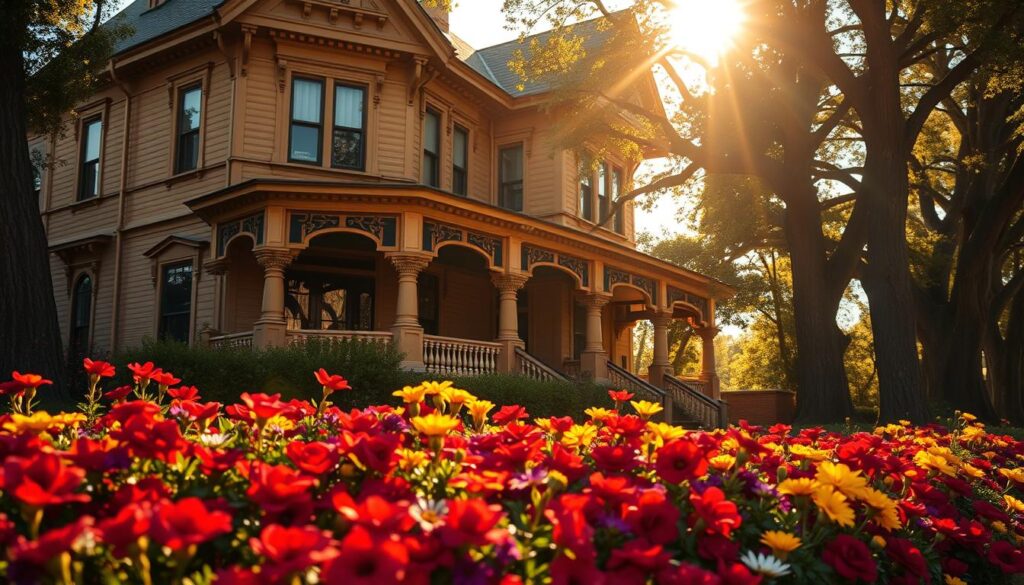
Modern Interpretations
Modern colors can give a new twist to historic home color schemes. By mixing old and new, homeowners can make their home unique. This way, they respect the home’s classic architectural features while adding their own touch.
For instance, a modern take on Victorian colors might use a bold color for trim. But keep the main colors more subtle. This adds interest and depth while staying true to the home’s style.
Updating a historic home’s colors is all about balance. It’s about keeping its history while adding a modern flair that shows the homeowner’s style.
Incorporating Modern Comforts
Adding modern comforts to old homes needs careful planning. We must keep the home’s original charm while adding new features. This balance is key in historic home renovations.
One big challenge is updating old homes without losing their charm. We need to install new electrical and plumbing systems. We also want these homes to be energy-efficient. It helps to hire experts in historic home renovations. They know how to keep the home’s character while adding modern touches.
Upgrades Without Compromising Character
When we make changes, we must think about the home’s history and style. For example, in a Victorian home, we might keep the old hardwood floors but update them. In the kitchen, we can mix old and new elements to keep the home’s feel.
Here are some tips for updating without losing the home’s charm:
- Choose materials that match the home’s original look.
- Keep as many original features as you can.
- Add modern touches that fit the home’s style.
Smart Home Integration
Smart home tech can make old homes more comfortable and easy to use. It lets us keep the home’s historic look while adding new features. For instance, smart thermostats can save energy, and smart lights can mimic the home’s original glow.
When adding smart home tech, we should pick devices that don’t clash with the home’s look. Working with a smart home expert who knows old homes is also a good idea. They can make sure the tech fits the home’s history and style.
By carefully adding modern comforts and smart tech, we can make old homes cozy and true to their past. This way, we keep the home’s history while making it more functional and appealing.
Historical Context in Design Choices
Restoring a historic home means understanding its past. This knowledge helps keep the home’s original feel while making it useful today.
Reflecting Local History
The design of homes is shaped by local history. For example, coastal homes might show maritime themes. Homes in the Southwest might blend Native American and Spanish styles. By choosing designs that reflect local history, homeowners keep their home’s heritage alive.
To do this, research local architectural styles and materials. Look at the cultural influences that shaped the area. This research helps in picking colors, furniture, and decorations.
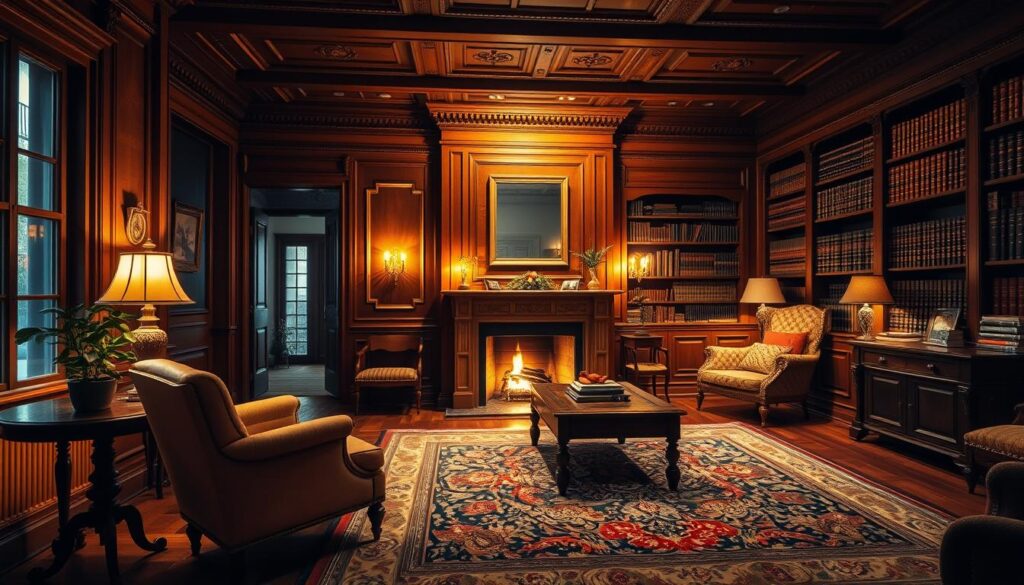
Importance of Architectural Integrity
Keeping a historic home’s architecture true is key to preserving it. This means keeping original parts and updating wisely. For example, you might keep old moldings, restore wooden floors, or fix antique fixtures.
| Feature | Original Element | Restoration Tip |
|---|---|---|
| Moldings | Wooden moldings | Retain original moldings where possible; replicate if necessary |
| Floors | Hardwood floors | Restore by sanding and refinishing |
| Fixtures | Antique lighting fixtures | Clean and restore to maintain original look |
By focusing on these details, homeowners can keep their historic home relevant today. It’s a balance between keeping the past alive and making it modern. This balance is crucial for the home’s historical value.
Resources for Historic Home Owners
Keeping a historic home in good shape means knowing its history and using the right tools for its upkeep. Owners starting this journey need lots of information and help. This ensures their homes are fixed up right and with care.
Preservation Societies
Local and national preservation groups are key for historic home owners. These groups focus on keeping old buildings safe and teach how to do it right. For example, the National Trust for Historic Preservation has lots of help, like grants and advice, for those fixing up their homes.
As “The preservation of cultural heritage is a fundamental aspect of our shared identity”, says the National Trust for Historic Preservation. Working with these groups can really help with fixing up your home. They have workshops, experts to talk to, and a community of people with similar interests and problems.
Online Databases and Guides
Online resources and guides are also very important for historic home owners. Websites focused on preservation-focused interior design and vintage home decor give tips on old design styles, materials, and methods. They help owners make choices that keep their homes true to their past but also comfortable today.
“The key to successful historic preservation lies in the balance between maintaining original integrity and embracing necessary modernizations.”
Some great online tools include databases of historic buildings, archives of old architecture, and forums where experts and fans share their knowledge. Using these tools, owners can tackle the challenges of fixing up their homes with confidence. This way, their homes stay as important parts of history.
- Local historical societies for region-specific guidance
- National preservation organizations for broad support
- Online forums and databases for detailed restoration advice
Tips for Maintaining Historic Interiors
Keeping historic home interiors in top shape needs careful attention and a good grasp of antique furniture styling. We talked about how important it is to keep your home’s original features intact. This helps keep its authenticity.
Preserving Original Features
To keep your historic home’s original features, it’s wise to check them regularly. Look for any damage or wear that needs fixing or restoring. This includes keeping the woodwork, moldings, and antique furniture in good condition.
Restoration Techniques
When you start restoration work, use traditional methods and materials. This makes sure the work fits with your home’s original look. It’s best to work with skilled craftsmen who know how to restore historic homes.
By following these tips, we can keep our historic homes looking great and true to their past. This way, they will be beautiful and authentic for many years to come.

